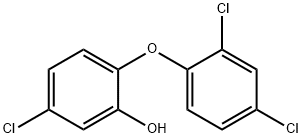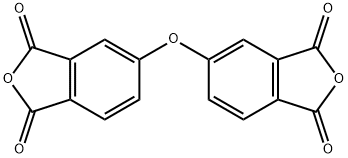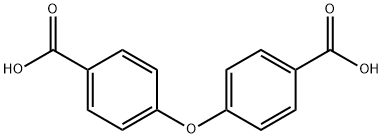3,4'-Oxydianiline
Synonym(s):3-(4-Aminophenoxy)aniline;3-(4-Aminophenoxy)benzenamine;3,4′-DAPE;3,4′-Diaminodiphenyl ether;3,4′-Oxydiphenylamine
- CAS NO.:2657-87-6
- Empirical Formula: C12H12N2O
- Molecular Weight: 200.24
- MDL number: MFCD00036097
- EINECS: 220-190-0
- SAFETY DATA SHEET (SDS)
- Update Date: 2024-11-14 20:10:21

What is 3,4'-Oxydianiline?
Description
3,4'-Oxydianiline (3,4'-ODA) is a phenyl ether derivative capped at both ends with two amines in the para and meta positions. 3,4'-ODA is commonly used in the synthesis of polyimides which have multifunctional properties.3,4'-ODA is transparent and can be used as a substrate for displays. Polyimides are transparent and can be used as substrates for displays. 3,4'-ODA can also be used to synthesise organic porous materials with a BET surface area of up to 351 m2/g. Polyetherimide membranes made from this diamine structural unit show good permeation during water-isopropanol separation.
The Uses of 3,4'-Oxydianiline
3,4'-Oxydianiline is an ether organic substance and can be used as a pharmaceutical intermediate.
The Uses of 3,4'-Oxydianiline
3,4''-Diaminodiphenyl Ether, can be used for the synthesis of asymmetric soluble polyimides. It can also be used as a spacer in the preparation of glycine-based molecular tongs as inhibitors of β-amyloid peptide Aβ1-40 aggregation in vitro.
Properties of 3,4'-Oxydianiline
| Melting point: | 67-71 °C(lit.) |
| Boiling point: | 206.5 °C1 mm Hg(lit.) |
| Density | 1.1131 (rough estimate) |
| refractive index | 1.6660 (estimate) |
| storage temp. | Keep in dark place,Inert atmosphere,Room temperature |
| solubility | Chloroform, Methanol |
| form | Solid |
| pka | 4.78±0.10(Predicted) |
| color | Off-White |
| Stability: | Light sensitive |
| CAS DataBase Reference | 2657-87-6(CAS DataBase Reference) |
Safety information for 3,4'-Oxydianiline
| Signal word | Danger |
| Pictogram(s) |
 Skull and Crossbones Acute Toxicity GHS06  Health Hazard GHS08  Environment GHS09 |
| GHS Hazard Statements |
H317:Sensitisation, Skin H341:Germ cell mutagenicity H351:Carcinogenicity H361:Reproductive toxicity H410:Hazardous to the aquatic environment, long-term hazard |
| Precautionary Statement Codes |
P201:Obtain special instructions before use. P273:Avoid release to the environment. P280:Wear protective gloves/protective clothing/eye protection/face protection. |
Computed Descriptors for 3,4'-Oxydianiline
| InChIKey | ZBMISJGHVWNWTE-UHFFFAOYSA-N |
New Products
Tert-butyl bis(2-chloroethyl)carbamate (S)-3-Aminobutanenitrile hydrochloride N-Boc-D-alaninol N-BOC-D/L-ALANINOL 3-(2,4-Dimethoxybenzyl)dihydropyrimidine-2,4(1H,3H)-dione 7-Bromo-1H-indazole N-octanoyl benzotriazole 3,4-Dibenzyloxybenzaldehyde 4-Hydrazinobenzoic acid Electrolytic Iron Powder Fmoc-Val-Cit-PAB 1,1’-CARBONYLDIIMIDAZOLE R-2-BENZYLOXY PROPIONIC ACID 4-HYDROXY BENZYL ALCOHOL 1,1’-CARBONYLDI (1,2-4 TRIAZOLE) S-2-CHLORO PROPIONIC ACID (2-Hydroxyphenyl)acetonitrile 4-Bromopyrazole 5-BROMO-2CYANO PYRIDINE 5,6-Dimethoxyindanone 5-broMo-2-chloro-N-cyclopentylpyriMidin-4-aMine 1-(4-Methylphenylsulfonyl)-1H-1,2,3-benzotriazole 1-(2-Chlorobenzyl)-4-nitro-1H-pyrazole 1-(2-Nitrophenyl)-4-phenylpiperazineRelated products of tetrahydrofuran








You may like
-
 3,4'-Diaminodiphenyl Ether CAS 2657-87-6View Details
3,4'-Diaminodiphenyl Ether CAS 2657-87-6View Details
2657-87-6 -
 3,4′-Oxydianiline CAS 2657-87-6View Details
3,4′-Oxydianiline CAS 2657-87-6View Details
2657-87-6 -
 Ste-Glu-AEEA-AEEA-OSUView Details
Ste-Glu-AEEA-AEEA-OSUView Details
1169630-40-3 -
 1446013-08-6 Fmoc-His-Aib-OH TFA 98%View Details
1446013-08-6 Fmoc-His-Aib-OH TFA 98%View Details
1446013-08-6 -
 127464-43-1 99%View Details
127464-43-1 99%View Details
127464-43-1 -
 Chloro Uracil 99%View Details
Chloro Uracil 99%View Details
1820-81-1 -
 2-ETHYLPYRIDINE 100-71-0 99%View Details
2-ETHYLPYRIDINE 100-71-0 99%View Details
100-71-0 -
 13162-05-5 99%View Details
13162-05-5 99%View Details
13162-05-5